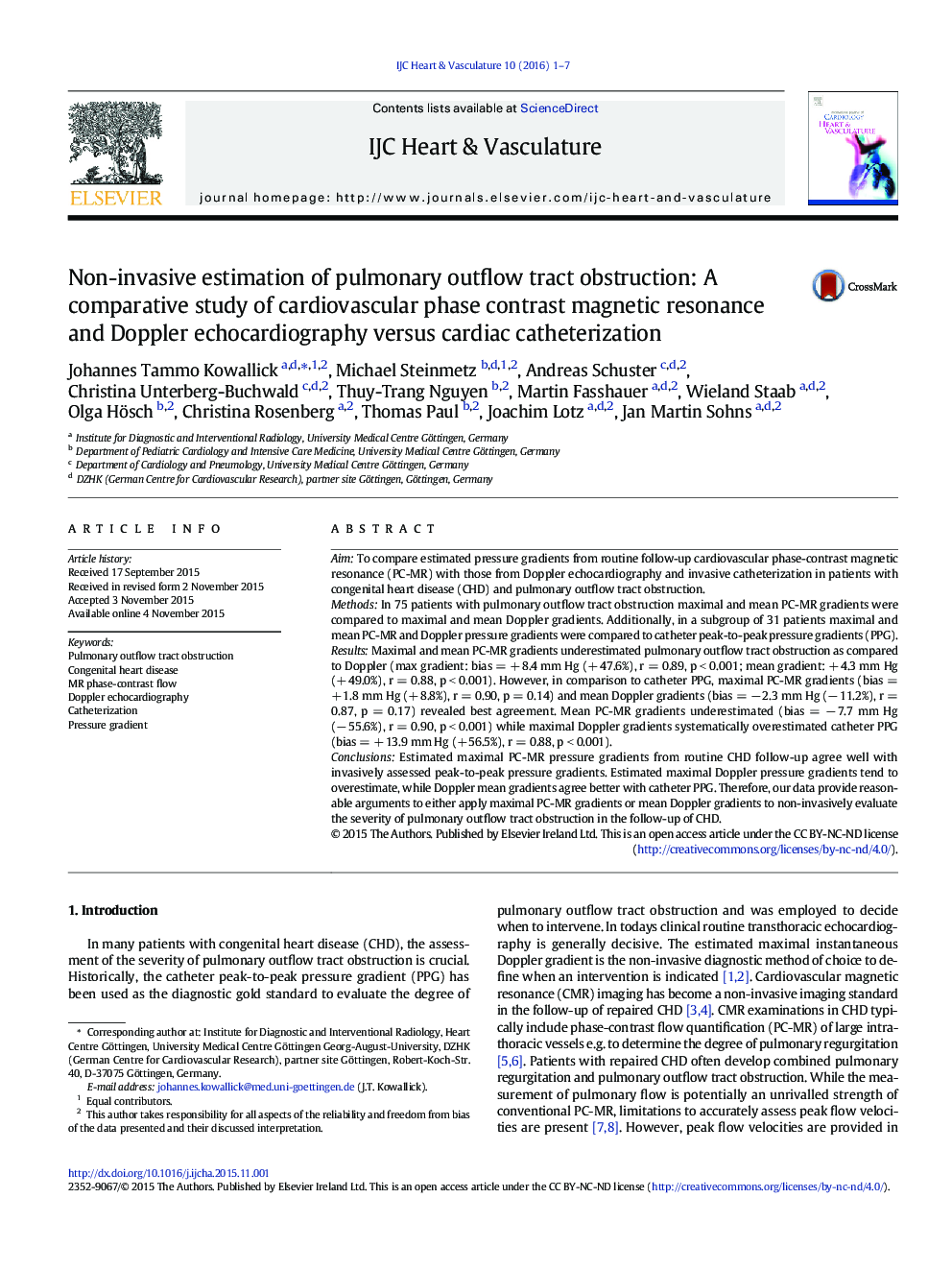| Article ID | Journal | Published Year | Pages | File Type |
|---|---|---|---|---|
| 2926943 | IJC Heart & Vasculature | 2016 | 7 Pages |
AimTo compare estimated pressure gradients from routine follow-up cardiovascular phase-contrast magnetic resonance (PC-MR) with those from Doppler echocardiography and invasive catheterization in patients with congenital heart disease (CHD) and pulmonary outflow tract obstruction.MethodsIn 75 patients with pulmonary outflow tract obstruction maximal and mean PC-MR gradients were compared to maximal and mean Doppler gradients. Additionally, in a subgroup of 31 patients maximal and mean PC-MR and Doppler pressure gradients were compared to catheter peak-to-peak pressure gradients (PPG).ResultsMaximal and mean PC-MR gradients underestimated pulmonary outflow tract obstruction as compared to Doppler (max gradient: bias = + 8.4 mm Hg (+ 47.6%), r = 0.89, p < 0.001; mean gradient: + 4.3 mm Hg (+ 49.0%), r = 0.88, p < 0.001). However, in comparison to catheter PPG, maximal PC-MR gradients (bias = + 1.8 mm Hg (+ 8.8%), r = 0.90, p = 0.14) and mean Doppler gradients (bias = − 2.3 mm Hg (− 11.2%), r = 0.87, p = 0.17) revealed best agreement. Mean PC-MR gradients underestimated (bias = − 7.7 mm Hg (− 55.6%), r = 0.90, p < 0.001) while maximal Doppler gradients systematically overestimated catheter PPG (bias = + 13.9 mm Hg (+ 56.5%), r = 0.88, p < 0.001).ConclusionsEstimated maximal PC-MR pressure gradients from routine CHD follow-up agree well with invasively assessed peak-to-peak pressure gradients. Estimated maximal Doppler pressure gradients tend to overestimate, while Doppler mean gradients agree better with catheter PPG. Therefore, our data provide reasonable arguments to either apply maximal PC-MR gradients or mean Doppler gradients to non-invasively evaluate the severity of pulmonary outflow tract obstruction in the follow-up of CHD.
